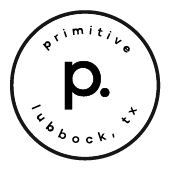BLOG The First Step in Building Great Software
The First Step in Building Great Software
POSTED BY The Prim Pack | Aug 13, 2021

There are so many reasons why small to large businesses alike would be on the hunt for new software (improving services, streamlining systems and processes, managing important client data).
Depending on the needs of the business, there are a few mass-produced, off-the-shelf software solutions that might solve standard problems. But, if you’re looking for a specific solution or set of solutions that target specific needs, then investing in custom software is your safest bet giving you the highest ROI.
That all being said, though, before you hunker down and put your budget into the hands of an agency, it’s critical you know if they’re valuing a first critical step in the custom software process as much as they should: research.
Why do you need to do research?
- Cost effectiveness
Unforseen speed bumps and road blocks can slow down the operations of your new app or software program. Or worse, they can halt them altogether. By fleshing out the details of your new custom solution on the front end, you avoid as many obstacles as possible which ultimately saves time and money for you and your business.
- Confident results
The more research your team does, the higher the likelihood that the end result will be both comprehensive and robust. Time, logic, critical thinking, and detailed analysis are all necessary if you’re looking to build a software that is:
-
- Reliable and secure for all users at all times
- Functional and innovative
- Streamlined in product design and business necessity
- Industry disruption
Not all custom software solutions are equal. In fact, many custom software solutions were created to disrupt their respective industries and have businesses soar past their competitors. Take for example, Cloud computing which quickly replaced in-house servers or traditional hosted services. Rather than having critical files on a physical hard drive, cloud computing uses a remote public or private database capable of providing users with functions such as:
-
- Data analysis
- Streaming audio and video
- Delivering software on demand
- Storage, backup, and data retrieval
- Increased market share
The research stage of any new application, or even iteration of existing software, serves to enhance your business by helping to identify features that increase market share. Essentially, by providing clients with something they’ve never seen before or weren’t aware they needed until now, they place a higher value on your business over competitors. When this occurs, your business strengthens the barrier of entry for competitors to enter your particular industry.
How long should a typical research phase take?
On average, the research stage of your new application or software will take 30-60 days.
Within this 30-60 day timeframe, your software developers should have a shared understanding of your market, the users that will interact with your product, and know how to define the success of the product.
What should I expect from the research phase?
At the end of the 30-60 day research stage, your team will have:
- Wireframes
- A slide deck of the proposed product
- User stories
The wireframes of your new software or application is a visual guide, or blueprint, that represents your new product. Within the research phase, your wireframes will demonstrate how the product will look and the functionalities it will possess. Depending on the scope of your product, the wireframes can be as basic as a sketch or as in-depth as an interactive mock-up.
The slide deck of your application or software highlights the core functionalities of your application or software. These functionalities will address initial pain points and their respective solutions so that early adopters can transition to your product. Presenting these features allows for a quick market entry along with providing valuable insights that showcase how consumers react to your product, in turn allowing for logical next steps to be decided upon.
A user story is usually a series of sentences that define how the product will be used by the consumer. The stories not only blueprint the way the user will interact with your product, but the steps and/or pages needed to accomplish this goal.
User story formula: As a [persona], I [want to], [so that].
User story examples:
- As a credit card holder, I want to view my statement so I can pay the balance due.
- As an employee, I want to better organize my work so I don’t miss deadlines.
- As a copy editor, I want to review content before it’s published so I can make sure it doesn’t have any grammar errors.
Every new product, or iteration of an existing product, is an investment in your business. The research phase of every new software or application is a critical first step and comes with a wealth of advantages for your business.
Explore what a real Primitive partnership looks like when building a custom application through our Parkhill Case Study.
SHARE THIS POST:

About the writer, The Prim Pack
Primitive is a full-service digital agency specializing in strategy, branding, web development, and technology solutions. With a passion for innovation and a commitment to helping businesses grow, our team crafts digital experiences that make an impact.